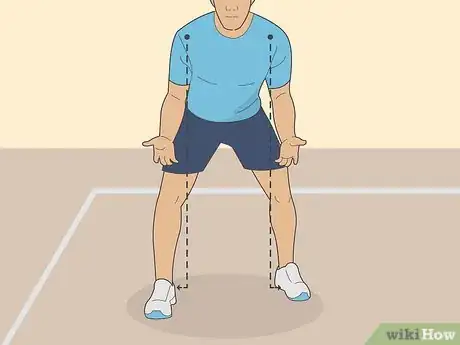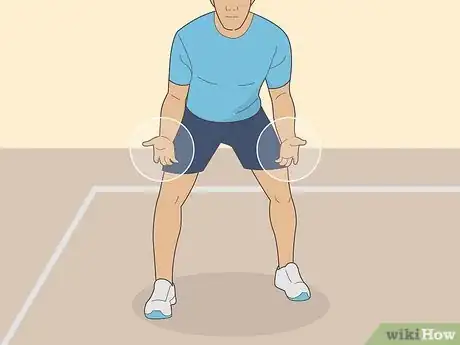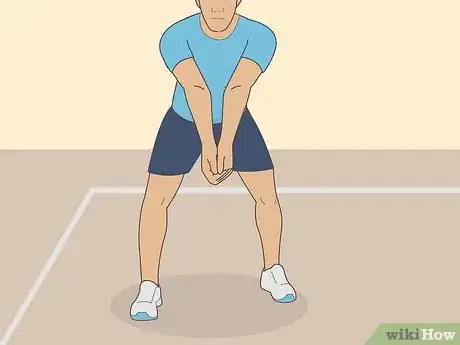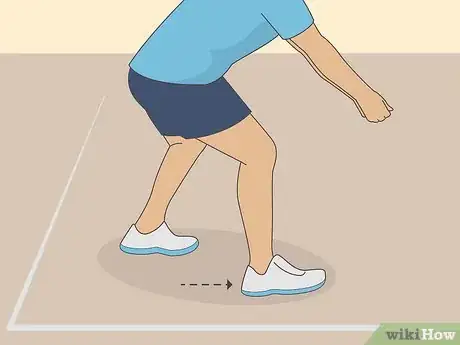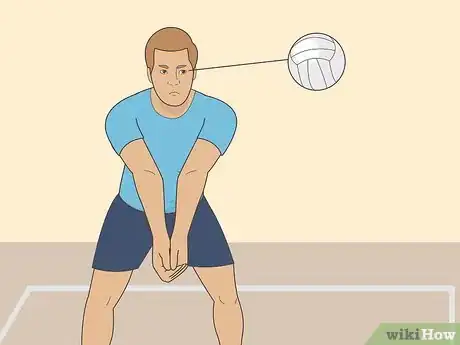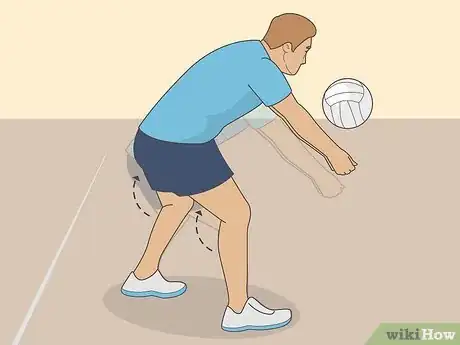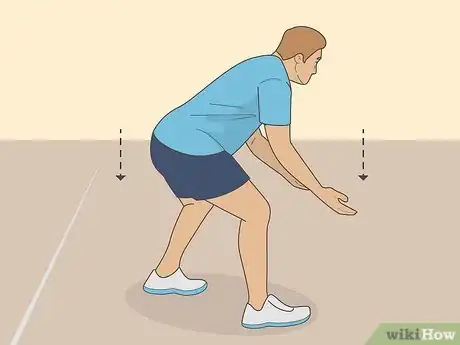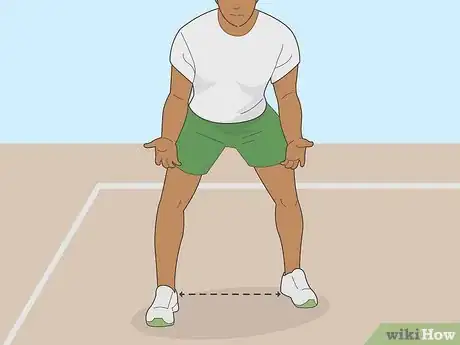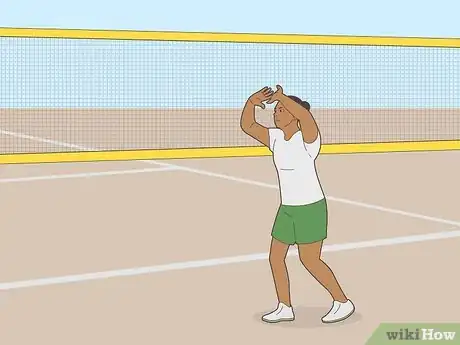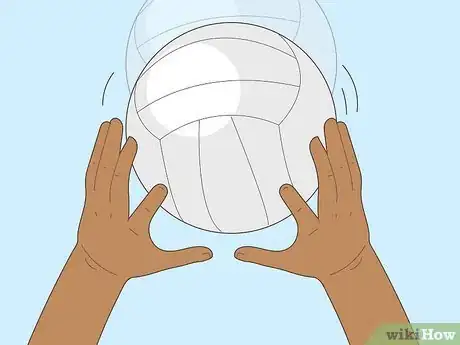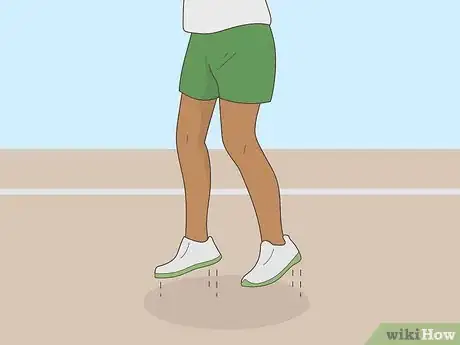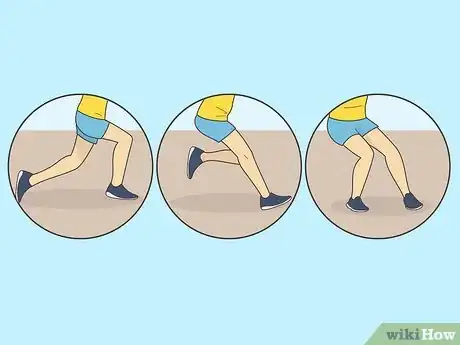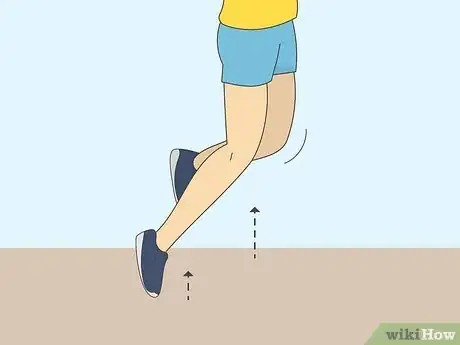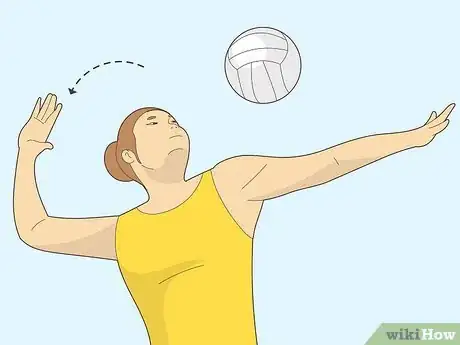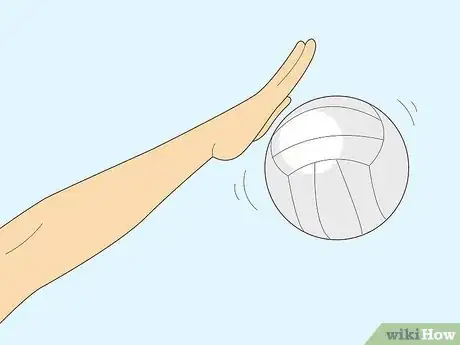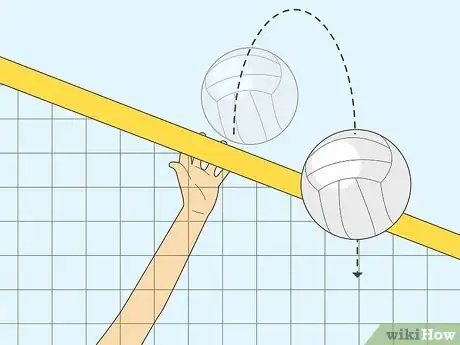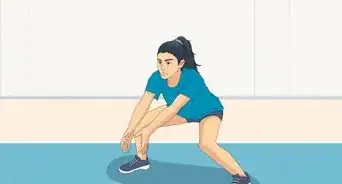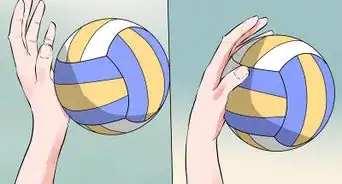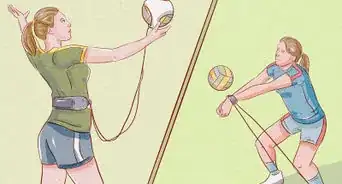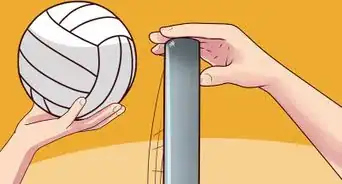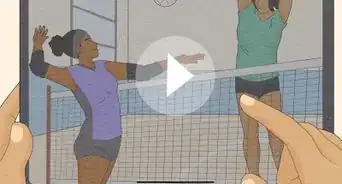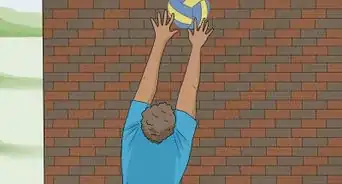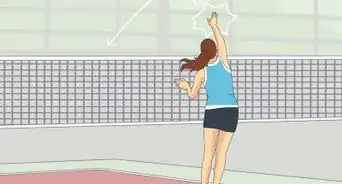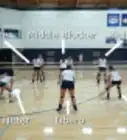X
wikiHow is a “wiki,” similar to Wikipedia, which means that many of our articles are co-written by multiple authors. To create this article, 13 people, some anonymous, worked to edit and improve it over time.
This article has been viewed 54,620 times.
Learn more...
Basic indoor volleyball can be broken into three parts: passing, setting, and hitting. Each of these can be mastered through practice, coordination, and proper form. To master each of them, you have to start off with proper footwork and work your way into practicing with a ball. Once you have started using a ball, it is vital to your skills to continue using proper footwork.
Steps
Part 1
Part 1 of 3:
Passing a Volleyball
-
1Use the proper stance. You want to stand with your feet a little further apart than your shoulders. Bend your knees and curve your back so that your chest is upright, forcing your butt to stick out a little. You should be standing on your toes and ready to move in any direction in a split second.[1]
- If someone were to push you while in your passing position, you should easily be able to move a foot to save you. They should be able to tap you and cause you to fall toward one direction or the other.
-
2Hold your arms in “ready position.” Using your proper stance, extend your arms straight in front of you. Now, bend your elbows half way. You should look as though you’re holding a large box with your palms facing up. This makes it possible to pass with either your forearms or your hands in a split second decision.Advertisement
-
3Learn to pass with your platform. Now that you have your ready position down, work on the form for passing with your forearms, or platform. Take one hand and place it flat on the other. Next, take your thumbs and have them meet in the middle. Cup your fingers, and point your thumbs away from you. Try to get your thumbs as far from your body as possible, this will straighten your arms and force your forearms up to create your platform. You always want your platform to be straight.
- Try squeezing the sides of your elbows together to give you a straighter platform. If you’re double jointed, you might even be able to perfectly match up both forearms.
-
4Step forward with your outside leg. You always want the ball to go back into the court when you’re passing. Therefore, whichever leg is nearest the outside of the court will be the one you lead with. This will face your platform toward the court.
- Stepping doesn’t require standing straight up. Stay low as the ball comes to you.
-
5Keep your eye on the ball. Watch the ball come over the net and onto your platform. Never look away from the ball.
-
6Use your legs. As the ball falls onto your platform, be keep the angle between your arms and torso steady. You want to use your legs to lift the ball, don’t swing your arms.
- Swinging your arms creates inconsistency in where your pass will go. You need very strong legs to stay low and pass correctly.
- Follow through to target. As you straighten your legs to move the ball, be aware of the way you’re facing. If you’re facing the target, you’ve done it correctly.
-
7Stay low and be ready. Even after you pass the ball and watch it go to your target, you want to stay low and be ready for the ball to come back at you. When playing in the back row, you should never be standing straight up unless the official has blown the whistle and the play has just ended.
Advertisement
Part 2
Part 2 of 3:
Setting a Volleyball
-
1Use proper footwork. When preparing to set, your feet should be shoulder width apart with a slight bend in your knees. You should, once again, be on your toes and ready to move.[2]
-
2Square up with the net. You should have your right shoulder next to the net. Keep yourself square to the net, no matter where the ball goes along it. This ensures that you’re facing where you want the ball to go.
-
3Use the proper hand form. When setting, your thumbs and forefingers should form a triangle. This is the hand positioning you should be waiting in when the ball is coming into your setting area. Keep your hands in the shape of a ball. If you keep your fingers straight you will not only be called for illegal setting form, but you also put yourself at risk of injury.
- Have your hands ready. As soon as the ball begins to come toward you, your hands should be up by your head. When first starting out, tap your thumbs to your forehead before you set each ball.
-
4Accept the ball. As the ball comes to you, you want to use your wrists to “accept the ball.” You aren’t allowed to hold it, but accepting the ball gives you the ability to control where you’re going to put it. Keeping your hands at forehead level will help you to have proper setting form. This will keep you from holding the ball for too long.
-
5Use your legs. Just as with passing you want to use your legs to move the ball, not your arms. Although your arms will straighten as you push through the ball, the power of your set should be coming from your legs.
- Release the ball cleanly. The ball should only be in your fingers for a second. Using your legs, push the ball to the spot you want it to go to. Push through your legs, tighten your abdominals, and use your arms to direct the ball. You should finish in almost a superman position. Make sure the ball has minimal spin, because the officials will call you for a double contact if the ball spins more than one full rotation.
Advertisement
Part 3
Part 3 of 3:
Hitting a Volleyball
-
1Master footwork. Before you can think about hitting, you must be able to take a proper approach. Start back on the attack line with your feet next to each other at a 45 degree angle to your setter.[3] These directions will be for righties, if you are a lefty, do the mirroring movement. Take your right foot and take a large first step. From here, take a big and powerful step onto your left foot. You should be about 3 feet away from the net at this point. Then take your right foot and quickly match it to your left foot. As you land on these two feet, your legs should be bent and ready to jump.
- Use your arms to help your approach. Start with them in front of you and swing them back as you come to your last two steps of your approach. They should be fully extended behind you before you take off for your jump.
-
2Jump upwards. You don’t want to use your momentum to drive you forwards or you’ll jump into the net. Use your legs and arm swing to propel you up.
-
3Pull your arm back. As you jump, pull your right arm back passed your face. Keeping your elbow up, swing toward the ball. Always keep your eye on the ball.
-
4Keep your wrist strong. As you swing through the ball, you want a strong wrist. If your wrist is weak and flimsy, the ball won’t make it over the net. Using your abdominal and shoulder muscles, put your power through the ball and swing through. You should finish by landing on the ground with your arm swinging all the way through.
- Hand contact is the most important part to placing the ball. Placing the ball is what will score your points. Practice hand contact by standing 20 feet from a wall, tossing a ball up, and hitting it into the corner of the floor and the wall. Try to get the entire surface of your hand on the ball at once.[4]
-
5Tip if you need to. If your spacing is awkward, or the ball is in the wrong spot for you, you can tip the ball. This is when you tap the ball just enough to get over the block and watch it fall gently on the ground behind them.
Advertisement
Community Q&A
-
QuestionHow much practice do I need to improve my performance in order to make it to the team?
 DonaganTop AnswererIt is hard to say without knowing your skill level. Generally, the more you practice, the better you get. It's really not possible to practice too much!
DonaganTop AnswererIt is hard to say without knowing your skill level. Generally, the more you practice, the better you get. It's really not possible to practice too much! -
QuestionIs it normal for my arm to hurt when throwing a ball?
 Community AnswerIf you are just starting to play volleyball, it will hurt when you bump or serve the ball, leaving red dots/bruises on the wrist area. But as you keep on playing volleyball, your arms will get more used to making contact with the ball and it won't hurt as much. Plus you may be using muscles you don't normally use, so they need time to adjust and build strength.
Community AnswerIf you are just starting to play volleyball, it will hurt when you bump or serve the ball, leaving red dots/bruises on the wrist area. But as you keep on playing volleyball, your arms will get more used to making contact with the ball and it won't hurt as much. Plus you may be using muscles you don't normally use, so they need time to adjust and build strength. -
QuestionWhy do they use that kind of ball?
 DonaganTop AnswererIt bounces well, and it's light enough that it usually doesn't hurt when it hits you.
DonaganTop AnswererIt bounces well, and it's light enough that it usually doesn't hurt when it hits you.
Advertisement
References
- ↑ http://www.intertribalsports.org/wp-content/uploads/2012/04/Volleyball-Drills-Training.pdf
- ↑ http://www.intertribalsports.org/wp-content/uploads/2012/04/Volleyball-Drills-Training.pdf
- ↑ http://www.intertribalsports.org/wp-content/uploads/2012/04/Volleyball-Drills-Training.pdf
- ↑ http://www.strength-and-power-for-volleyball.com/beginner-volleyball-drills.html
About This Article
Advertisement
